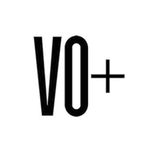Worldwide Report: The Luxury Facts
Bernstein's predictions for 2025, the gold rush for China's youth, and Chinese provincial noblewomen's growth as new luxury consumers in Tier 4 and 5 provinces, in Central China
Monday, 28 April 2025, by Federica Frosini
The luxury scene
According to Bernstein's analysis, the fourth quarter of 2024 had performed better than tepid expectations, but the latest growth forecast for luxury for 2025 has been revised downwards, from +5% to +2%. If the 2024 performance was driven by four main points - the return of the aspirational customer; the United States as the main market for luxury; a wait-and-see attitude on tariffs - 2025 foresees a slowdown in the US economy, a slow recovery in China, consumer fatigue with high prices and the perception of unattractive design weighing on sales. For HSBC too, the slowdown in high-end was a consequence of the greed of big brands, which raised the bar too high by increasing prices. In this scenario, the largest luxury companies are just spectators, and among of all of them, LVMH will have the most complete view of the situation.
Gold rush 2.0
As prices skyrocket, China's Generation Z has begun to turn gold bars into custom jewelry, sparking a viral DIY trend worth billions of views on social media. On Xiaohongshu (also known as RedNote), the “home goldsmithing” hashtag has soared to 40 million views, while hashtag “goldsmithing” videos on Douyin have reached 3 billion views. Whether for investment or self-expression, this new gold rush is reshaping the Chinese jewelry landscape. Since last year, a growing number of young people have been adding gold to their portfolios to protect themselves from deflationary pressures, and the People's Bank of China has increased its gold reserves for three consecutive months. With gold prices skyrocketing, consumers, especially Millennials and Gen Z, are spending more on gold jewelry, driven in part by “guochao” or patriotic consumption. According to the World Gold Council, Chinese consumers between the ages of 18 and 34 were responsible for more than one-third of gold jewelry sales in 2024, particularly in the purchase of pure gold products and designer jewelry inspired by their cultural heritage. By way of example, shares of Laopu Gold, a Chinese jeweler famous for its handcrafted workmanship, rose 10% last month to an all-time high with waiting lines of up to 8 hours at the Beijing store.
Small cities, big impact
According to Tmall's Strategic Consumer Group report, the so-called “Chinese provincial noblewoman” is becoming a key driver of high-end consumption. These affluent women, mainly from the 4- or 5-tier cities of central China, are spending significantly in luxury categories, using shopping channels that go beyond traditional platforms to include live streaming marketplaces. «Through data from Tmall Luxury Pavilion,» says Anny Liu, general manager of Tmall Luxury Pavilion at Alibaba Group, «we noticed that this demographic bracket is mainly composed of affluent women between the ages of 45 and 60 from small towns in China. With their rapidly growing spending power, they integrate luxury into their home life by buying gold jewelry, natural pearls and high-end items. To give a concrete example, during the “Double 11” shopping festival in 2024, spending on luxury items in third- and sixth-tier cities surpassed all other provinces.» According to Bain, although the Chinese luxury market shrank by 18-20% in 2024, this group continues to resist due to lower exposure to debt and isolated wealth. While they continue to prefer logo pieces from Chanel to Louis Vuitton, they are shifting towards more discreet investments such as Cartier's Love bracelets. They invest in trend-driven purchases but prefer affordable luxury backed by celebrities and the most popular KOLs. Unlike their counterparts who live in tier 1 cities and are seeking self-expression, “provincial noblewomen” use luxury to highlight their status within localized social hierarchies.

